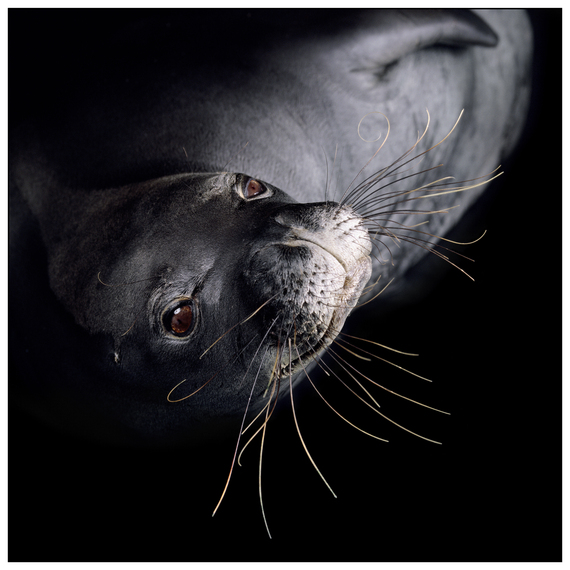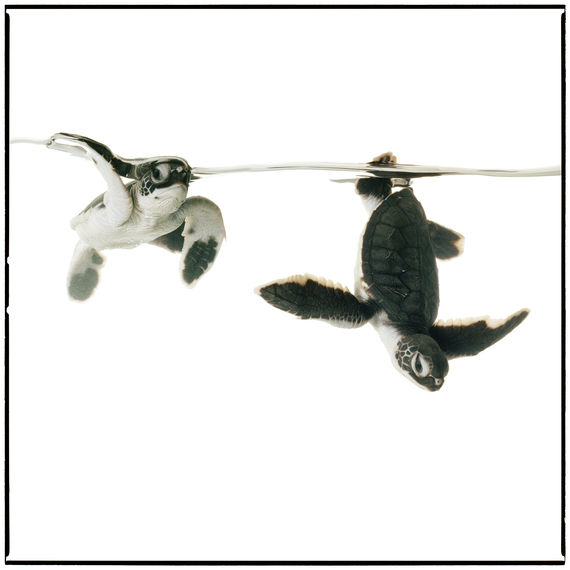When it was first designated 10 years ago, the Papahānaumokuākea Marine National Monument in the Northwestern Hawaiian Islands was the world's largest marine reserve. Since then, the sanctuary has been eclipsed in size nine times by new protected areas. Last year was a landmark in ocean conservation history as countries around the world safeguarded or committed to protect more than 965,000 square miles (2.5 million square kilometers) of critical ocean habitat.
This year, native Hawaiian groups are calling on the U.S. to expand Papahānaumokuākea from 140,000 square miles (363,000 square kilometers) to 625,507 square miles (1.62 million square kilometers)--an area almost four times the size of California--an expansion that would once again make Papahānaumokuākea the biggest marine reserve in the world.
If President Barack Obama heeds the calls, he'd be following in the footsteps of six previous presidents--including Franklin D. Roosevelt, Ronald Reagan, and George W. Bush--who have protected areas of the Northwestern Hawaiian Islands.
A larger Papahānaumokuākea would add protections to key ecosystems, including more open ocean waters, deep-sea habitats, and offshore seamounts (underwater mountains). The Northwestern Hawaiian Islands and the waters around them are home to more than 7,000 species of marine life. Scientific expeditions to these islands continue to yield the discovery of several new species of fish, invertebrates, and algae. And some areas covered by the proposed expansion are populated exclusively by species found nowhere else on Earth, scientists say, including a black coral, the world's oldest known living organism--which started growing 4,265 years ago, around the same time the ancient Egyptians were building their pyramids.
The string of islands and atolls that run northwest from Nihoa, a 170-acre islet about 160 miles northwest of Kauai, also host one of the largest groupings of tropical seabirds in the world--14 million birds from 22 species--5.5 million of which breed in the area annually. Scientists say that 11 of those species are vulnerable to extinction and that broadening Papahānaumokuākea would provide critical protection of their breeding, nesting, and nurturing sites.
To many Hawaiians, Papahānaumokuākea is a sacred area, the source of all life and where the spirits return after their earthly hosts die. In the Hawaiian view of the universe, humans appeared after islands, waters, flora, and fauna, and it is therefore our responsibility to protect these resources.
Hawaiians also use this uninhabited region to carry on the ancient practice of voyaging, in which crews on traditional sailing canoes use a technique called way finding to navigate the ocean by observing the sun, moon, stars, and natural environment.
A new wave of Hawaiians is following these traditions, which include marking the sightings of migratory seabirds, leaping fish, and areas where marine life or birds are especially numerous. Sustaining such practices and knowledge depends on a healthy ecosystem.
The call to protect these practices by expanding Papahānaumokuākea started earlier this year with a letter to President Obama signed by seven prominent Hawaiians, including William Aila, deputy director of the Department of Hawaiian Home Lands, and Nainoa Thompson, a master navigator and president of the Polynesian Voyaging Society.
A broader group including lawmakers, mayors, city councils, traditional fishermen, veterans, and conservationists is also urging monument expansion. The group calls itself the Puʻuhonua Coalition, using a Native Hawaiian word that means a place of sanctuary. Not coincidentally, Puʻuhonua is the word that the late Louis "Buzzy" Agard, a locally renowned environmentalist and respected elder, used to describe his hopes for what is now Papahānaumokuākea.
The group started collecting letters and petitions in support of the expansion in April. A petition started by surfer, photographer, and shark attack survivor Mike Coots gathered more than 40,000 signatures from around the world in just one month. More than 100,000 letters and petitions have been collected so far.
The case for expansion is buttressed by the steady increase in reserves worldwide since Papahānaumokuākea was established on June 15, 2006. Chile, Kiribati, New Zealand, Palau, and the U.K. have announced sanctuaries, fully protecting 2 percent of the world's oceans.
While that's encouraging, it's not nearly enough, according to many marine scientists who strongly believe it is necessary to protect a representative 30 percent of the world's ocean if we are to safeguard biodiversity and support jobs in various sectors.
Fully protected marine reserves convey benefits beyond their boundaries because marine life moves in and out of these protected areas to feed, breed, and otherwise maintain balance in the oceanic web of life. By expanding Papahānaumokuākea, President Obama can lock in those benefits for one major area and prompt other world leaders to start dreaming even bigger.
The Pew Charitable Trusts' Global Ocean Legacy project supports the push by Native Hawaiians to expand Papahānaumokuākea. We ask President Obama to expand the monument, and we hope that you will, too. You may add your voice by signing this online petition.

